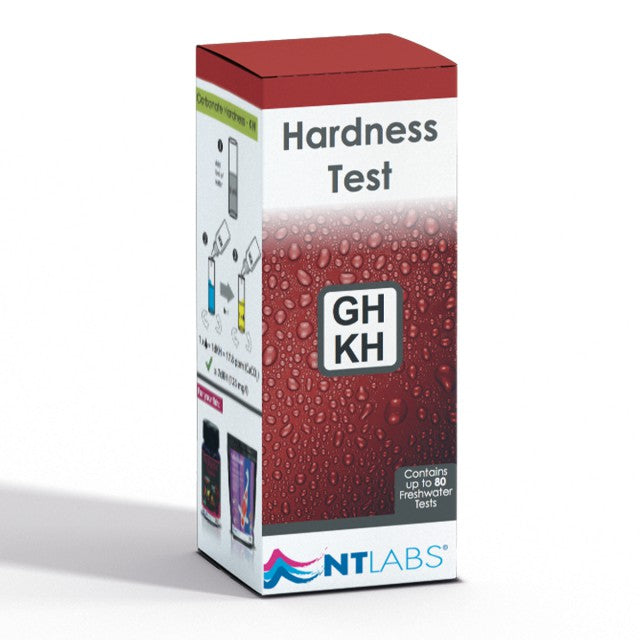No Products in the Cart

Flexible interest-free payment options available at checkout.
From as little as R 67.50 per payment. Learn more
KH, or carbonate hardness, also known as total alkalinity, measures the buffering capacity of your water—how well it can resist changes in pH. Stable KH levels help maintain consistent pH, which is crucial for fish health.
Measured in degrees KH (dKH):
1 dKH = 17.8 ppm (as CaCO₃)
Minimum recommended level: 4 dKH
Ideal range: 6–8 dKH
Low KH (<4 dKH): Water is unstable, and pH may crash.
➤ Use a buffer like KH Up – pH Stabiliser to raise KH.
Tap water KH >6 dKH? Regular water changes should help maintain ideal KH levels.
Ensure the test tube is clean.
Add 5 ml of aquarium water to the test tube.
Add 1 drop of KH reagent, mix gently. Water should turn pale blue.
Add more drops one at a time, mixing between each, until the solution turns yellow.
The number of drops = KH in dKH.
(If the water turns yellow after the first drop, KH is <1 dKH—this is dangerously low.)
GH measures the total dissolved minerals (mainly calcium and magnesium) in your water. It determines whether your water is classified as soft or hard and plays a key role in fish osmoregulation and plant growth.
Soft water species: 3–6 dGH
Hard water species: 10–15 dGH
1 dGH = 17.8 ppm (as CaCO₃)
Too hard? Use reverse osmosis (RO) water to dilute GH.
Too soft? Add GH-raising materials like calcium carbonate rocks (e.g., ocean rock) for a natural boost.
Make sure the test tube is clean.
Fill with 5 ml of aquarium water.
Add 2 drops of GH A reagent, mix—water should turn dark pink.
Add GH B reagent one drop at a time, mixing between drops, until the sample turns blue.
The number of GH B drops = GH in dGH.
(If the solution turns blue after the first drop, GH is <1 dGH—this indicates very soft water.)
Tip: Regular KH and GH testing helps you prevent pH crashes, fish stress, and poor plant growth. Use the NTLabs Multi-Test Kit for accurate and reliable results every time.



